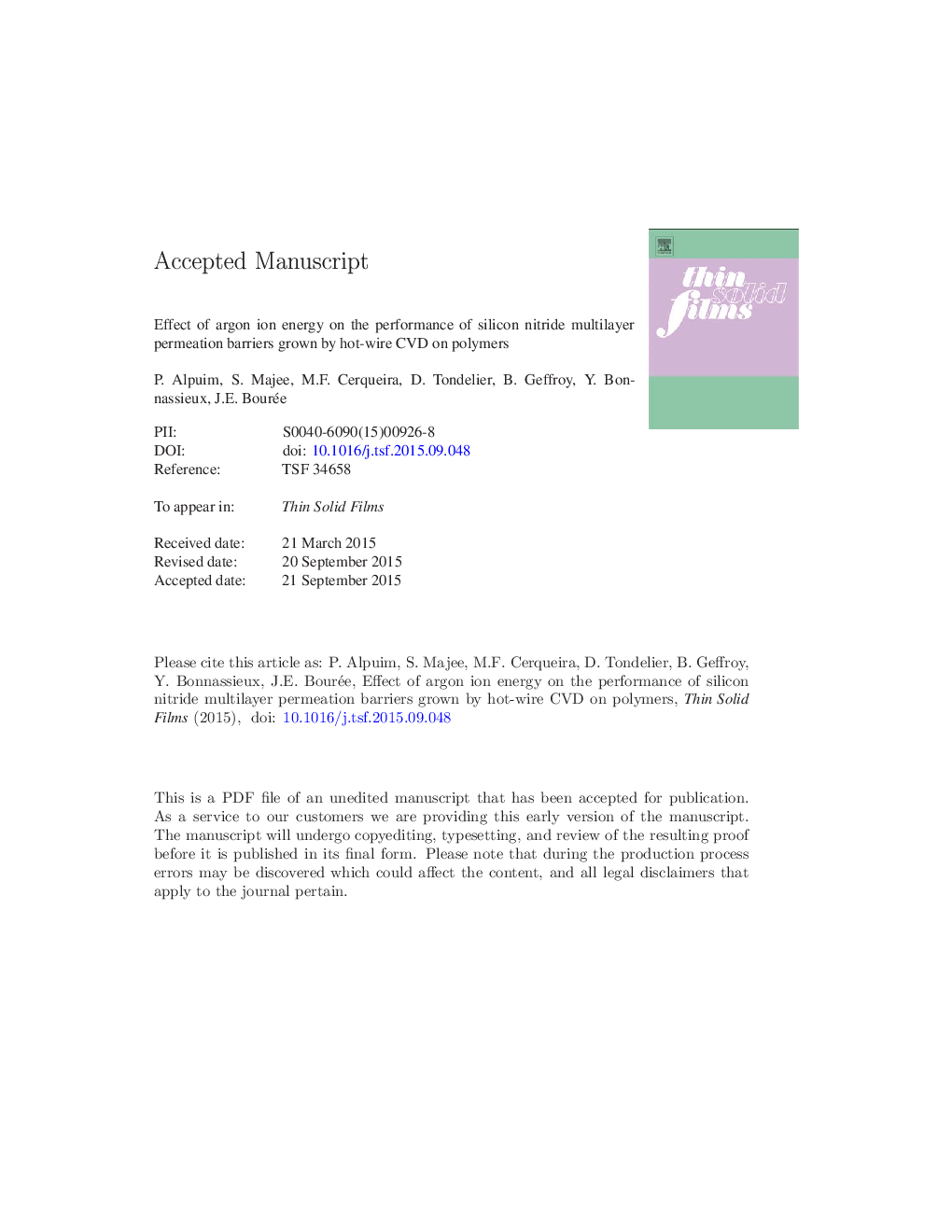| Article ID | Journal | Published Year | Pages | File Type |
|---|---|---|---|---|
| 10669598 | Thin Solid Films | 2015 | 38 Pages |
Abstract
Permeation barriers for organic electronic devices on polymer flexible substrates were realized by combining stacked silicon nitride (SiNx) single layers (50 nm thick) deposited by hot-wire chemical vapor deposition process at low-temperature (~ 100°°C) with a specific argon plasma treatment between two successive layers. Several plasma parameters (RF power density, pressure, treatment duration) as well as the number of single layers have been explored in order to improve the quality of permeation barriers deposited on polyethylene terephthalate. In this work, maximum ion energy was highlighted as the crucial parameter making it possible to minimize water vapor transmission rate (WVTR), as determined by the electrical calcium test method, all the other parameters being kept fixed. Thus fixing the plasma treatment duration at 8 min for a stack of two SiNx single layers, a minimum WVTR of 5 Ã 10â 4 g/(m2 day), measured at room temperature, was found for a maximum ion energy of ~ 30 eV. This minimum WVTR value was reduced to 7 Ã 10â 5 g/(m2 day) for a stack of five SiNx single layers. The reduction in the permeability is interpreted as due to the rearrangement of atoms at the interfaces when average transferred ion energy to target atoms exceeds threshold displacement energy.
Keywords
Related Topics
Physical Sciences and Engineering
Materials Science
Nanotechnology
Authors
P. Alpuim, S. Majee, M.F. Cerqueira, D. Tondelier, B. Geffroy, Y. Bonnassieux, J.E. Bourée,
